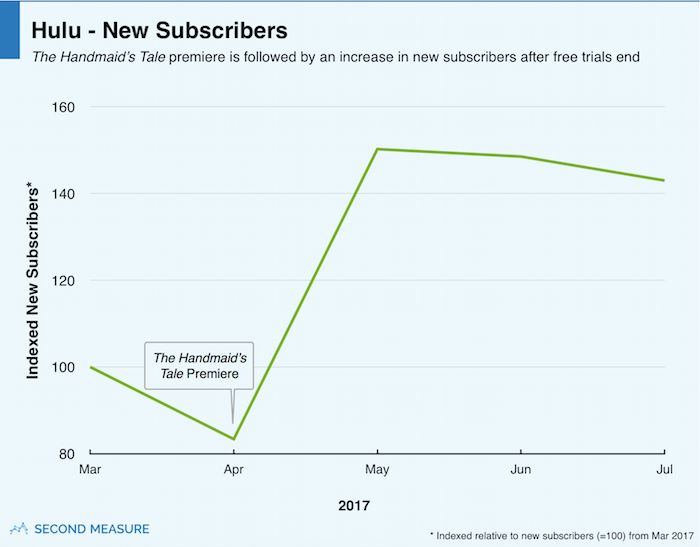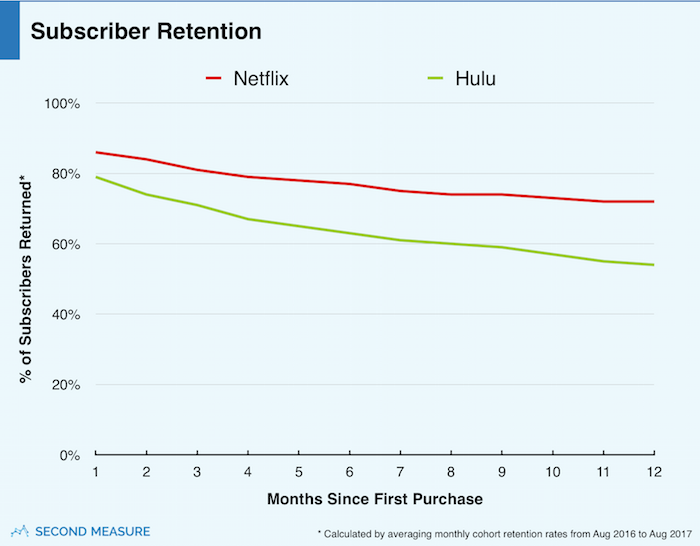NOTE: Bloomberg Second Measure launched a new and exclusive transaction dataset in July 2022. Our data continues to be broadly representative of U.S. consumers. As a result of this panel change, however, we recommend using only the latest posts in assessing metrics, and do not support referring to historical blog posts to infer period-over-period comparisons.
We learned last week that Netflix is planning to raise its prices (again). When this has happened in the past, notably in 2011 and in 2016, some Netflix members decided not to stick around. Time will tell if the newest price hikes will chill the company’s subscriber numbers again but, right now, Netflix is so dominant in the streaming-video landscape, the truth is, it might not really matter.
Hulu is Netflix’s nearest threat, but the race really isn’t very close. Currently in the United States, one in four people subscribe to Netflix, while only one in 14 are Hulu subscribers. Sling TV is a distant third in the video-streaming market, with about 1 percent of the U.S. population subscribing. And other live-streaming services like CBS All Access and DirectTV Now have even fewer subscribers than that.
Netflix’s closest competitor has actually decided to go the other way with its pricing. A year ago, Hulu reduced monthly fees for the first year of service but saw only a 2-percent increase in subscribers from the previous month.
To be fair, though, second-place Hulu has been growing. It saw a major bump in new subscribers after The Handmaid’s Tale premiered in April. May showed an 80-percent increase in new viewers, and that number remained high in June and July, when the show’s cautionary narrative inspired political protestors to don Handmaid replica garb. Since Hulu offers a free introductory month, new subscribers become observable in the month after they sign up.

Despite Hulu’s recent gains, Netflix has still managed to attract slightly more new subscribers than Hulu so far this year. And perhaps more importantly, Netflix does a better job of holding on to its viewers. Over the past 12 months, Netflix retained members at a rate 18 percentage points higher than Hulu.

More good news for Netflix is that many online viewers are subscribing to Hulu in addition to—rather than in replacement of—Netflix. Hulu subscribers are significantly more likely than the general population to have a Netflix account, as 62 percent of Hulu members also have Netflix. This overlap suggests that, as options expand, subscribers will continue to view Netflix as the pillar of cord-cutter services.
Wondering just how much the newest price hike will impact Netflix’s subscriber retention in the coming months? Request a demo and find out.
